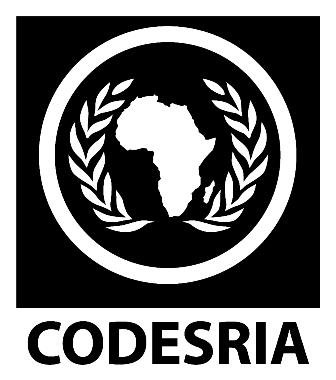ANALYSIS OF FACTORS INFLUENCING TRADITIONAL MEDICINES UTILISATION IN GHANA: EVIDENCE FROM KUMASI METROPOLIS AND SEKYERE SOUTH DISTRICT
Keywords:
TRADITIONAL MEDICINES UTILISATION, GHANA, KUMASI METROPOLIS, SOUTH DISTRICT AUGUST,Synopsis
The health of individuals, families and communities is an indispensable issue of global development. Health concems assume the cutting edge in national development agenda. It is an indicator of development and also the mechanism for achieving a desired development (Saeed et al, 2013; Thoa et al, 2013; Adejumo et al, 2013; Kanchan and Ghosh, 2012; Wilson et al, 2012; Oluwatuyi, 2010). But for a country to develop, its population must be healthy, and to be healthy calls for efficient and effective use of health care facilities (Buor, 2008a). Strong health systems are fundamental to improving health outcomes and accelerate prc,gress towards the health-related Millennium Development Goals (MDGs) of reducing maternai and child mortality, and to skirmishing HIV/AIDS, malaria and other diseases. At the time when economic downtum, a new influenza pandemic, and climate change add to the challenges of meeting those goals, the need for robust health systems is more acute than ever (WorldHealth Organisation [WHO], 2012).
Downloads
References
Aboagye, E. (2012).· Old Age Dependence on Family Support: The Effect of Healthinsurance Intervention. Master's Thesis in Health economics, Policy and Management, University of Oslo.
Abor, P. A., Abekah-Nkrumah, G. and Abor, J. (2008). An Examination of Hospital Governance in
Ghana. In: Leadership in Health Services Vol. 21 Issue 1,4760(pub1ishedessa.org.za)http://www.essa.org.za/download/2007conference/Abor;Abekah-Nkrumah&Abor.pdf (Accessed 19 January, 2013).
Adams, J., Sibbritt, D. and Lui, C. (201 la). The urban-rural
http://www.biomedcentral.com/l472-6882/11/2
Adams, J., Sibbritt, D., Broom, A., Loxton, D., Pirotta, M., Humphreys, J. and Lui, C. (2011b). A comparison of complementary and alternative medicine users and use across geographical areas: A national survey of 1,427 women. BMC Complementary and Alternative Medicine, 11:85. http://www.biomedcentral.com/1472-6882/11/85
Adams, J., Sibbritt, D. and Young, A. (2009). A longitudinal analysis of older Australian women's consultations with complementary and alternative medicine (CAM) practitioners, 1996-2005. Age
Ageing, 38:93-99.
Aday, L. A. and Andersen, M. R. (1974). A framework for the study of access to medical care. Health Services Research, 9: 208-220.
Addae-Mensah, 1. (1992). Towards a National Scientific Basis for Herbai medicine - A Phytochemists two decade contribution. Accra Ghana, University Press.·
Addai, E. and Gaere, L. (2001). Capacity building and Systems Development for SWAPs: The Experience of the Ghana Health Sector.
Adejumo, A., Faluyi, M. and Adejuwon, A. (2013). Role of Socio-Psychological Factors in Perceived
Quality of Care Rendered by Traditional Medical Practitioners in Ibadan, Nigeria. Global Journal of Health Science; Vol. 5, No. 6. doi:10.5539/gjhs.v5n6p186
Adewunmi, C. O. and Ojewole, J. A. O. (2004a). Safety of TRMs, Complementary and Alternative
Medicines in Africa. Afr. J. Trad. CAM, l: 1-3. Editorial.
Adewunmi, C. O. and Ojewole, J. A. O. (2004b). Are Institutions Ready to Empower Local Herbalist?
Afr. J. Trad. CAM, 2 (1): 1-3. Editorial.
Adewunmi, C. O. (1999). Medicinal plants, parasites and snails in health. Obafemi Awolowo University, Ile-Ife, Inaugural Lecture series, 132:13,22.
Addo, V. N. (2007). Herbal Medicines: socio-demographic characteristics and pattern of use by
patients in a tertiary obstetrics and gynaecology unit. Journal of Science and Technology, Vol. 27, No. 3: 149-155.
Adjei, P. O. and Buor, D. (2012). From poverty to poor health: Analysis of socio economic pathways
influencing health status in rural households of Ghana. Health Sociology Review, Vol. 21, No.
: pp. 232-241. (doi: 10.5172/hesr.2012.21.2.232
Adjei, S. (1989). Ways in which the design and delivery of health services may influence uptake: methods of enquiry. Journal of Health Transition Methods and Measures, Vol. 29, Pg. 197
Aghion, P., Howitt, P. and Murtin, F. (2010). The relationship between health and growth: When Locas meets Nelson-Phelps. Bruegel Working Paper, 2010/04
Agyare, C. Mensah, A. Y. and Osei-Asante, S. (2006). Antimicrobial Activity and Phytochemical Studies of some Medicinal Plants from Ghana. Boletin Latinoamericano y del Caribe de Plantas Medicinales y aromaticas, Chile.
Astin, J. A., Harkness, E. and Ernst, E. (2000). The Efficacy of "Distant Healing": A Systematic Review of Randomized Trials. Ann Intern Med. 132:903-910.
Atim, C., Grey, S., Apoya, P. Anie, S. J. and Aikins, M. (2001). A Survey of Health Financing Schemes in Ghana. Bethesda, MD: The Partners for Health Reformplus Project, Abt Associates Inc
Eisenberg, D. M., Kessler, R. C., Poster, C., Norlock, F. E., Calkins, D. R. and Delbanco,
T. L. (1993). Unconventional medicine in the United States. Prevalence, costs, and patterns of use.
N Eng!J Med., 328:246-252
Elkins, G., Rajah, M. H. and Marcus, J. (2005). Complementary and alternative medicine use bypsychiatric inpatients. Psycho! Rep, 96(1):163-166.
Elolemy, A.T. and AIBedah, A. M. N. (2012). Public Knowledge, Attitude and Practice of Complementary and Alternative Medicine in Riyadh Region, Saudi Arabia. OmanMedicalJournal, Vol. 27, No. 1: 20-26. DOi 10. 5001/omj.2012.04
Elujoba, A. A., Odeleye, O. M., Ogunyemi, C. M. (2005). Traditional medicine development for medical and dental primary health care delivery system in A:frica. African J Trad, Complementary and Alternative Medicines 2, 46-61.
Elvin-lewis, M. (2001). Should we be concerned about herbai remedies. J Ethnopharmacol.,75(2-3):141-64.






